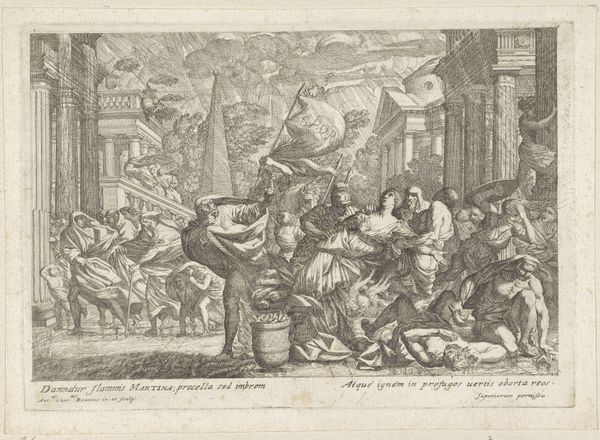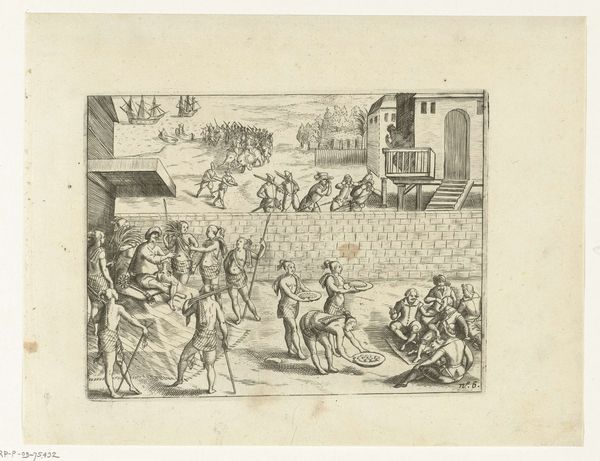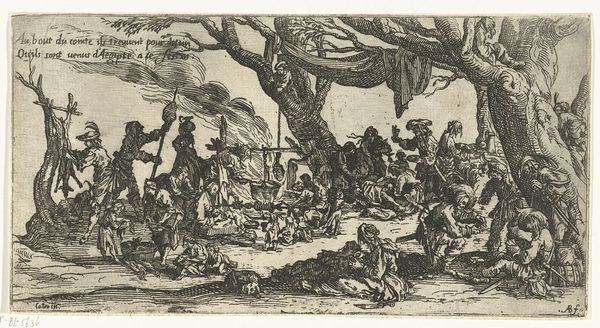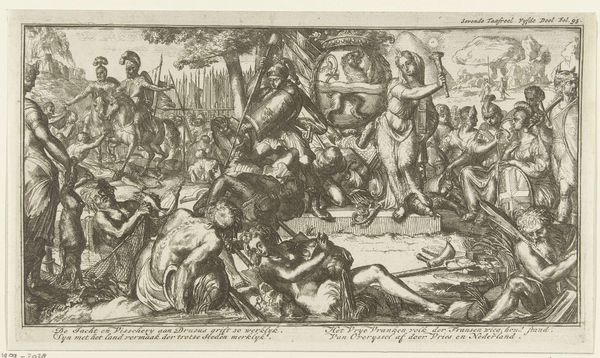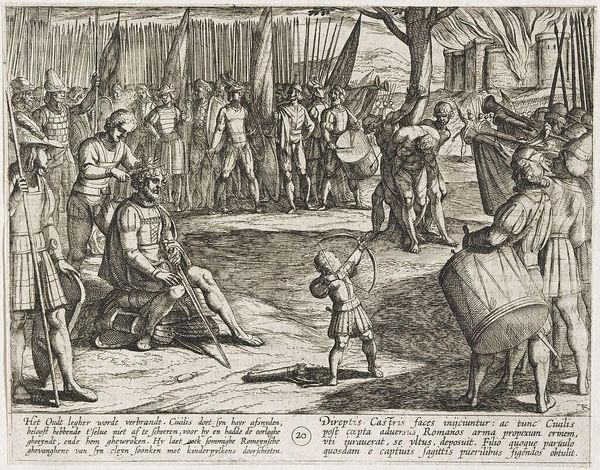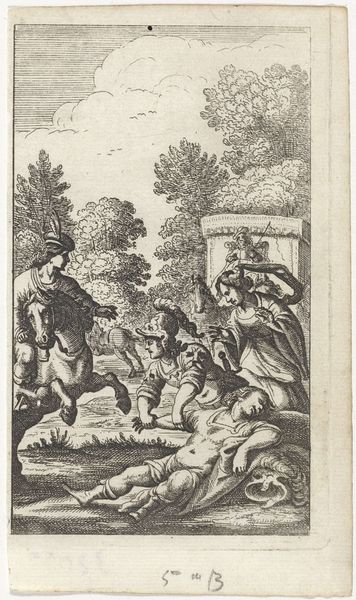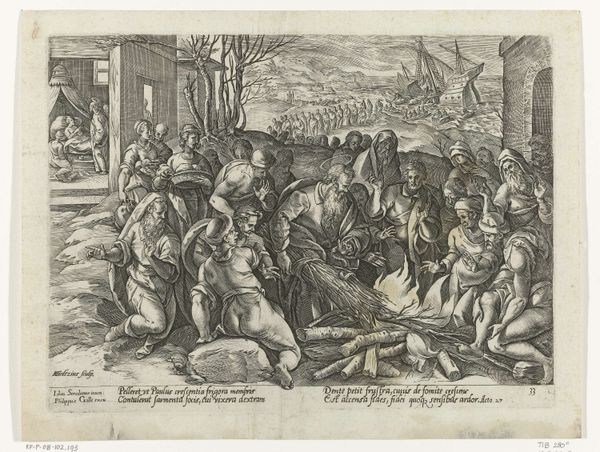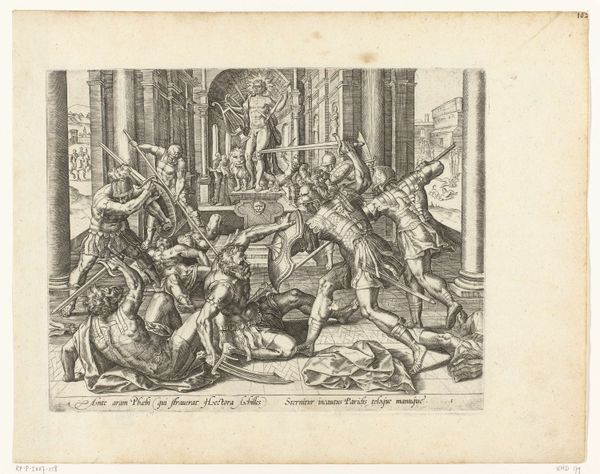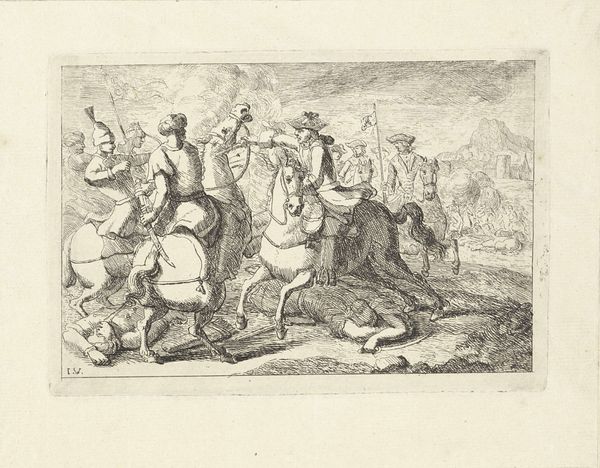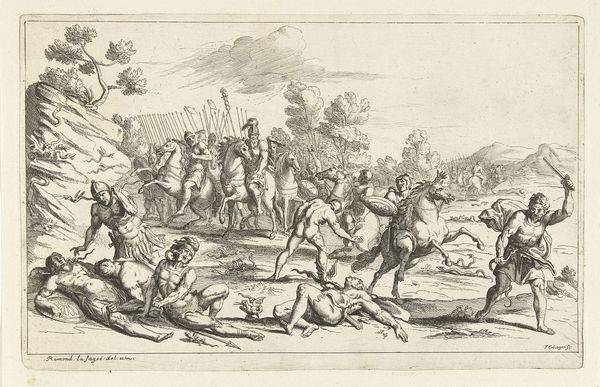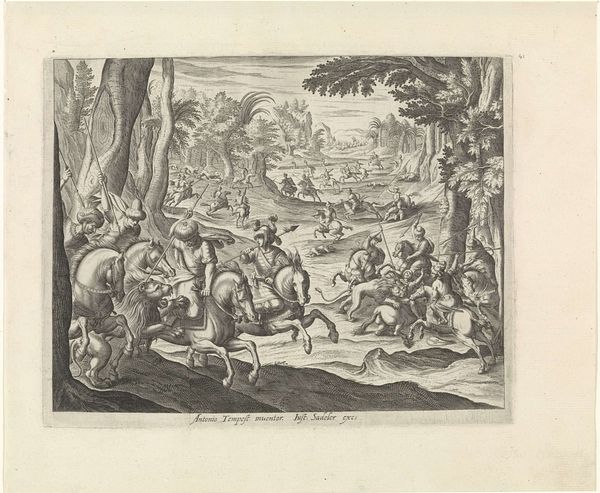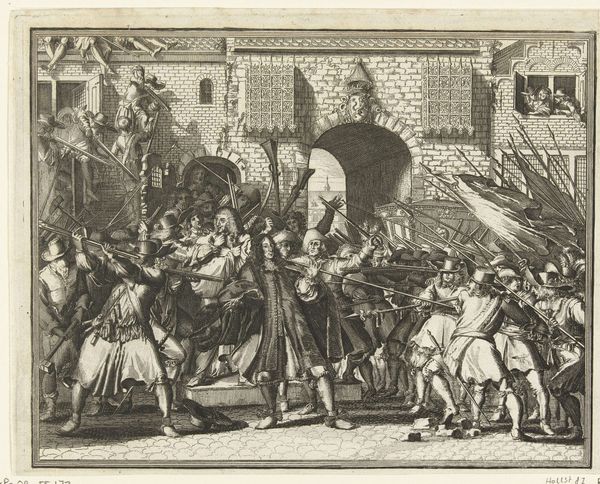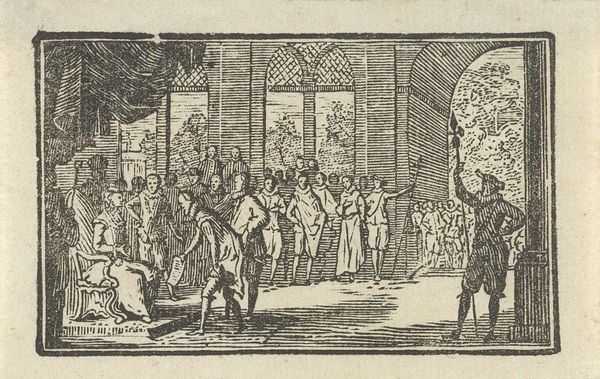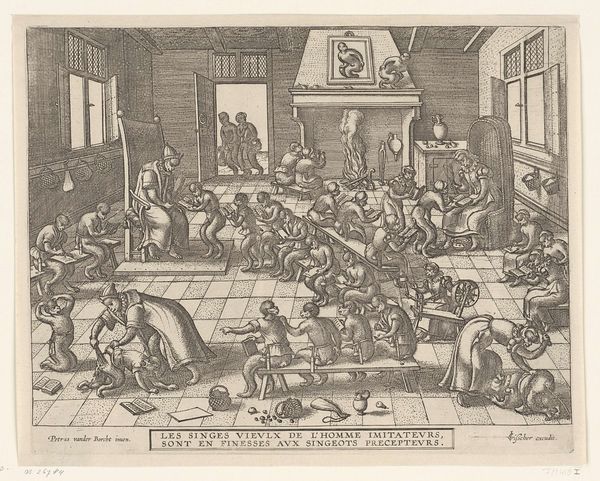
drawing, print, engraving
#
portrait
#
drawing
# print
#
pen sketch
#
genre-painting
#
history-painting
#
engraving
#
realism
Dimensions: height 138 mm, width 180 mm
Copyright: Rijks Museum: Open Domain
Curator: This engraving, "Bezoek aan een Afrikaanse koning, 1598," which translates to "Visit to an African King," dates from 1617-1619 and is attributed to an anonymous artist. Currently, it resides in the Rijksmuseum. It's executed with incredibly fine lines. What strikes you most about it? Editor: It’s the immediate tension in the composition that jumps out. The clear visual division between the horn-blowing European delegation on the left and the seated, nearly bare-chested African figures creates an instant sense of us versus them. Curator: Indeed, that contrast is quite deliberate. What cultural assumptions do you think the artist brings to bear on the image? The trumpets, the formality of dress—all suggest a very specific approach to diplomacy. Editor: Right, and the presence of the goat, seemingly presented as a gift. It reads as a commentary on cultural exchange that, frankly, feels deeply skewed. Is it offering or possibly something akin to a symbolic exchange related to beliefs or the economy? There is certainly a power imbalance visually highlighted in the scene. The act of presenting a gift or a sacrifice to another authority also plays on colonial narratives in similar accounts. Curator: Looking at it through that lens, I think this goes far beyond a mere depiction of an encounter. Consider the buildings in the background. Do they project what we understand to be seventeenth-century European ideas of "civilized" settlements versus "primitive" dwellings? The settlement is more organized; are these representations of actual events, or projections onto unfamiliar situations? Editor: Precisely. This image becomes less about historical record and more about justifying European presence and interactions through constructed imagery. It invites viewers to read these depictions of African societies through a biased European lens, shaping perception through visuals. I can’t help but question the implied narrative – what’s the power dynamic being portrayed here? Who has the right to chronicle, interpret, and broadcast it? Curator: Yes, you’re speaking about how visual culture at this time becomes instrumental for solidifying identity and constructing narratives about "other" cultures. Editor: Ultimately, the print offers us an early snapshot into how artistic representation contributes to constructing narratives of the colonizer and the colonized. I have found looking closer has just further made me question these accounts as opposed to believing in them as is. Curator: Reflecting on this piece has revealed deeper layers of understanding concerning cultural exchanges and the biases in historical artwork and art's instrumental role.
Comments
No comments
Be the first to comment and join the conversation on the ultimate creative platform.
